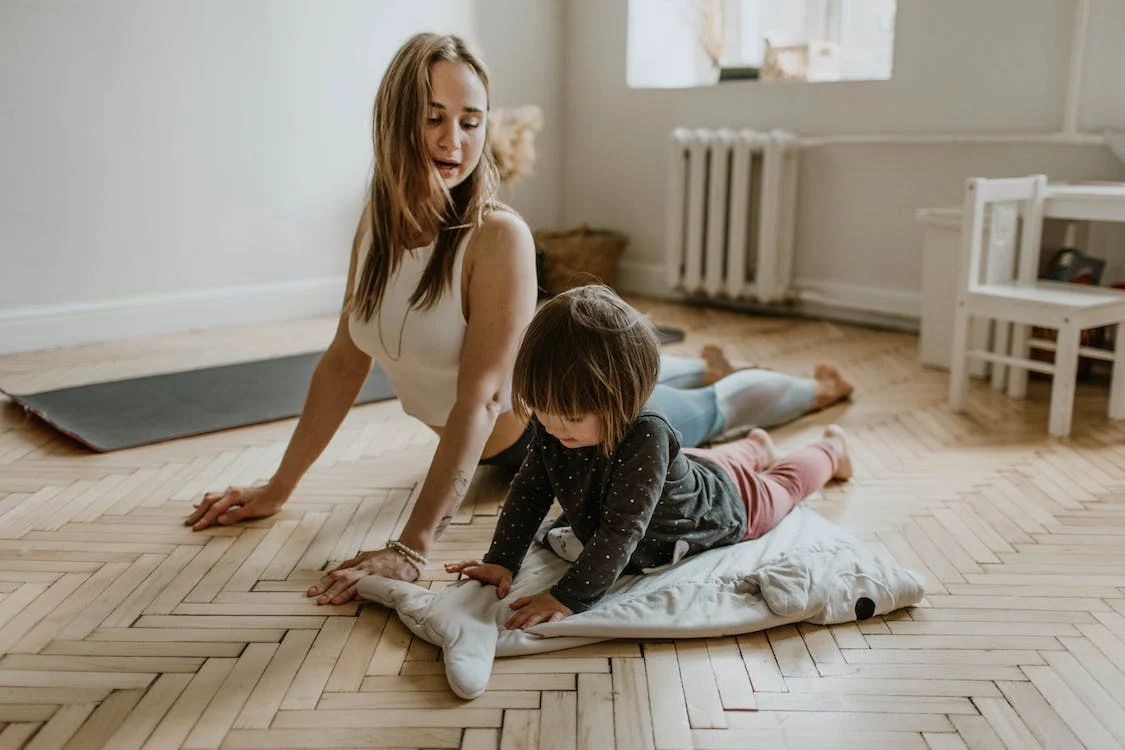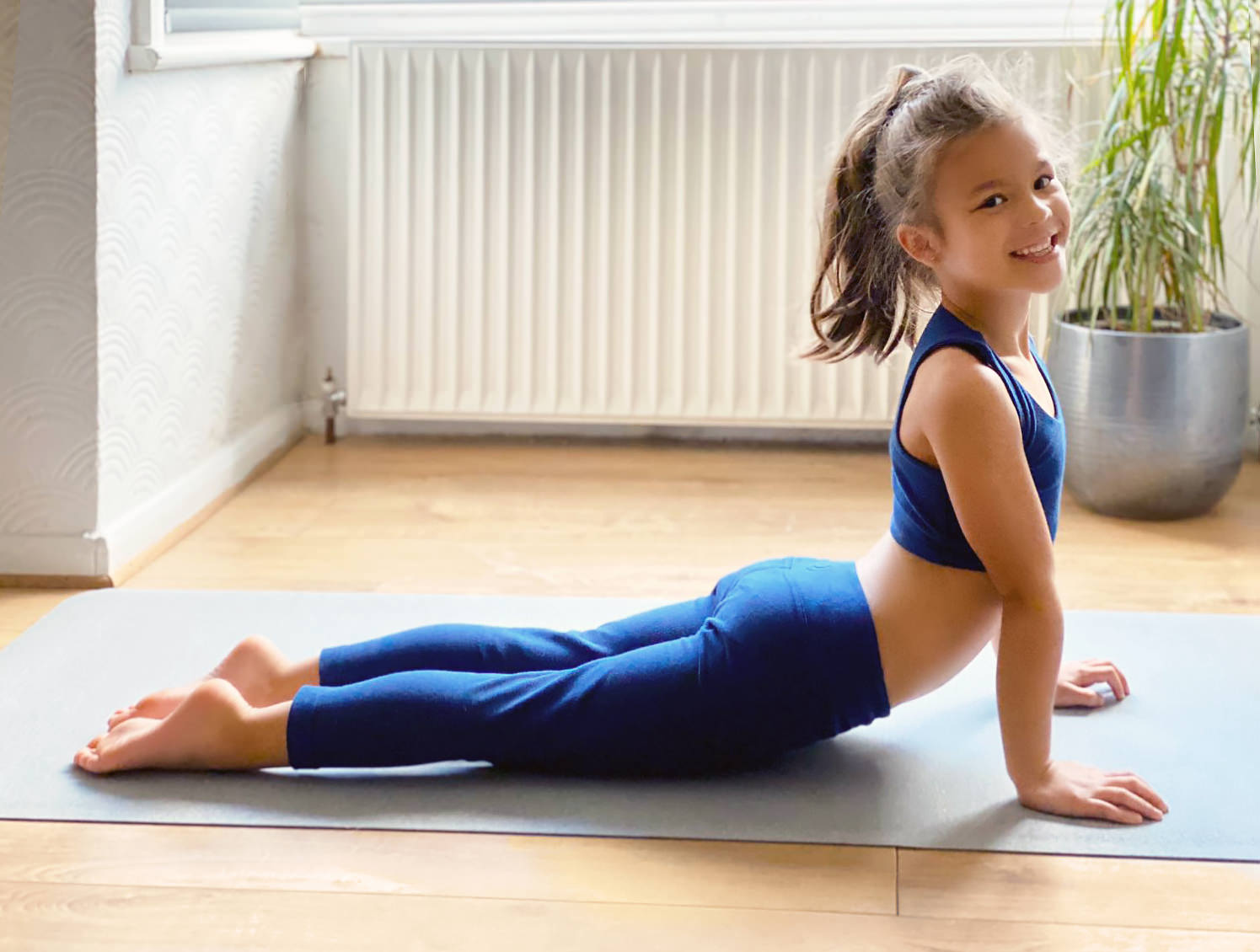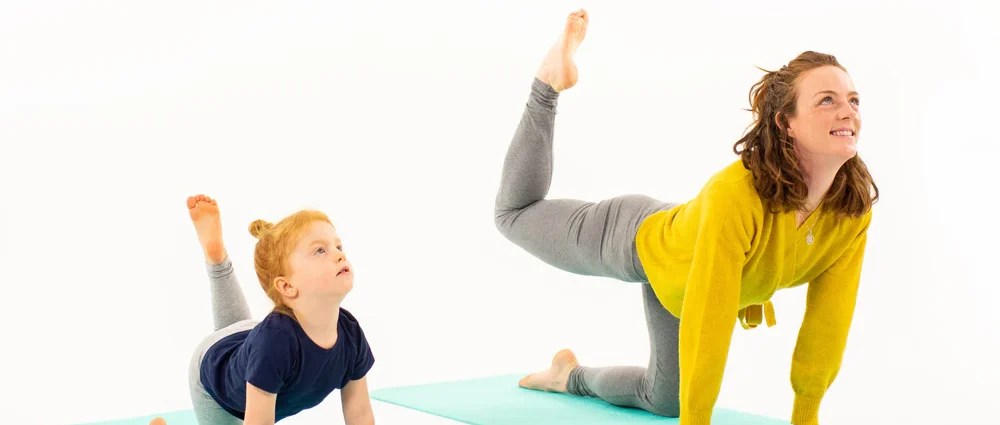Yoga isn’t just for adults; it’s a beneficial and fun activity for children too! Practicing yoga can help kids improve their flexibility, strength, and even their self-esteem and concentration. However, the real beauty of yoga lies in its adaptability to everyone, including young yogis. Introducing children to yoga at home is not only a fantastic way to engage them in physical activity, but it also provides an excellent opportunity for family bonding. In this blog, we’ll explore 10 fun and easy yoga poses that kids can try at home.
These yoga poses are perfect for a family yoga session and are suitable for children of all ages. Whether your child is a beginner or has some yoga experience, these yoga poses will add a playful and gentle challenge to their routine, promoting both their physical and mental well-being. So, let’s get ready to explore and enjoy the world of yoga together as a family!
Benefits of Children’s Yoga

Practicing yoga offers a multitude of benefits for children, impacting their well-being positively both physically and mentally. By incorporating yoga into their daily or weekly routines, children can enhance their development in a fun and engaging way, preparing them for healthier and more mindful futures.
Physical Benefits
Children’s yoga is designed to promote physical health in a non-competitive environment. It helps in enhancing flexibility, which is particularly valuable as children are naturally more flexible, and starting young helps in maintaining this advantage as they grow. Improved strength is another significant benefit, as various yoga poses encourage muscle development in a safe manner that is appropriate for their growing bodies.
Moreover, yoga aids in developing coordination and balance. Through poses that require focus and stability, children learn to fine-tune their motor skills and awareness of their body in space. This is crucial not only for physical activities but also for everyday life, reducing the risk of injury.
Enhanced body awareness and posture are also key physical benefits of practicing yoga. As children learn to control their movements and align their bodies, they naturally adopt better posture habits, which can help prevent back and neck problems later in life.
Lastly, the breathing exercises and relaxation techniques used in yoga can significantly improve respiratory health. The emphasis on deep, mindful breathing increases lung capacity and strengthens the respiratory system, which is beneficial for kids with asthma or other breathing issues.
Mental Benefits:
On the mental health front, yoga is a powerful tool for children. It teaches them how to manage stress through breathing techniques and mindfulness practices. These skills are invaluable throughout life, helping children face challenges with a calmer, more balanced approach.
Regular yoga practice also promotes better concentration and focus. The requirement to pay attention to yoga poses and breath work helps children learn to focus their minds, a skill that translates to improved academic performance and overall cognitive function.
Self-esteem and confidence receive a significant boost from yoga. As children master new poses and notice their progress, they feel a sense of accomplishment and self-worth. This positive reinforcement encourages a healthier self-image and a willingness to take on new challenges.
Yoga fosters emotional resilience, teaching children how to remain calm and composed in the face of difficulties. Learning to breathe through discomfort and maintain focus under pressure are tools that help them navigate life’s ups and downs with grace.
Additionally, yoga introduces children to the concept of mindfulness — being fully present in the moment. This can enhance their emotional regulation, reduce symptoms of anxiety and depression, and improve their relationships with others by making them more empathetic and understanding.
Setting Up for a Family Yoga Session:

Incorporating yoga into family life can strengthen bonds, create lasting memories, and establish a foundation of health and mindfulness for children. Setting up for a successful family yoga session at home is simpler than you might think.
Create a Designated Space
Your yoga space doesn’t have to be large, but it should be clean, quiet, and free of distractions. Ideally, this area should have enough room for each family member to spread out their yoga mat without bumping into one another. Natural light and good ventilation can also enhance the experience, creating a calming environment that encourages relaxation and focus. If possible, dedicate this space solely to yoga and meditation, to cultivate a special ambiance that signifies it’s time for mindfulness and rejuvenation.
Gather Necessary Props
While yoga requires minimal equipment, there are a few props that can enhance your practice and provide additional support, especially for children. Essential props include:
- Yoga mats: Provide cushioning and grip for each participant. Mats signify individual spaces, and having their own can make children feel more involved.
- Blocks: Useful for added support in certain yoga poses, making them more accessible to kids of varying flexibility levels.
- Blankets: Can be used for extra padding under knees or as a cover during relaxation poses. They also add an element of coziness, making the experience more inviting for children.
- Straps: Helpful for extending the reach in poses where hands can’t comfortably connect, ensuring a safe stretch without straining.
Having these items on hand can make your family yoga session more enjoyable and comfortable for all participants, encouraging regular practice.
10 Fun and Easy Children’s Yoga Poses:
- Tree Pose
Tree Pose is a wonderful way to help children find their balance and focus. Have them stand on one foot, place the sole of the other foot on their inner thigh or calf (just not on the knee), and stretch their arms up above their head like branches. Encourage them to imagine they are strong, tall trees swaying gently in the wind. This pose teaches concentration and balance while strengthening the legs.
- Cat-Cow Stretch
The Cat-Cow Stretch is a gentle flow between two yoga poses that warms the body and brings flexibility to the spine. Starting on their hands and knees, children will alternate between arching their back towards the ceiling, like a cat, and then dropping their belly towards the floor, looking up, like a cow. This movement stretches the neck and the torso and is a great way to introduce kids to mindful movement.
- Downward Facing Dog
A staple in many yoga practices, the Downward Facing Dog pose stretches the entire body but is especially beneficial for the shoulders, legs, and spine. Encourage children to form an upside-down “V” shape with their bodies, pressing their hands into the ground and lifting their hips up and back. It’s a fun pose that often makes kids feel like they are playing as they gain new perspectives by looking at the room upside down.
- Butterfly Pose
This seated pose involves bringing the soles of the feet together close to the body, knees bent out to the sides, mimicking butterfly wings flapping. It’s a fantastic pose for opening up the hips and thighs and can be quite relaxing. Kids can have fun fluttering their “wings” and imagining they are butterflies ready to fly away. It also offers a great opportunity for them to practice deep breathing.
- Cobra Pose
Lying on their stomachs, children will press their hands into the ground and lift their chest off the floor, extending the spine and opening the chest in Cobra Pose. This pose strengthens the spine and can help improve posture. It encourages kids to tap into the strength of their backs and arms and often makes them feel like mighty snakes or roaring lions.
- Happy Baby Pose
Many children naturally love the Happy Baby Pose. Lying on their backs, they grab the outside of their feet with their hands and rock gently from side to side. This pose is great for calming and soothing as it stretches the inner groin and back. It’s also a playful pose that often incites laughter and joy.
- Warrior Pose
In Warrior Pose, children step one foot back and bend their front knee, raising their arms high, feeling strong. It’s a great way to foster a sense of inner strength and confidence. Plus, kids love to imagine they are brave warriors during this pose, which makes it a hit.
- Child’s Pose
A resting pose that provides a moment of calm and relaxation, the Child’s Pose allows children to sit back on their heels with their arms stretched out in front, forehead resting on the ground. It’s a great pose for children to return to whenever they need a break or moment to breathe and relax.
- Bridge Pose
Lying on their back with knees bent, and feet on the floor, kids can practice lifting their hips towards the ceiling in Bridge Pose. This pose strengthens the back, buttocks, and hamstrings, while also opening up the chest and shoulders. It’s a great counteraction to sitting and provides a fun challenge for kids.
- Seated Forward Bend
Finally, the Seated Forward Bend invites children to sit with their legs stretched out in front of them, reaching for their toes. It’s a calming pose that stretches the back and legs and can help with focus and relaxation, providing a gentle way to wind down the practice.
Tips for a Successful Family Yoga Session:
Keep it Light and Fun:
Remember, the goal is to introduce kids to yoga in a fun and engaging way. Don’t worry too much about getting the yoga poses perfect. Use imaginative descriptions, make animal sounds for the animal poses, and don’t forget to laugh together. Keeping the practice light-hearted ensures everyone enjoys the session.
Encourage Creativity and Expression:
Allow children to interpret the poses in their way. If they want to add a personal twist to a pose or create a new pose altogether, encourage it! Yoga can be a wonderful outlet for creativity and self-expression, helping children feel more connected to the practice.
Emphasize The Importance of Breathing
Teach children the importance of breathing in yoga. Show them how to breathe deeply through their nose, filling up their belly like a balloon, and then releasing the air slowly. Breathing exercises can be particularly helpful for calming and focusing the mind, both during yoga and in daily life.
Conclusion:
Yoga offers so much more than just a fun activity; it’s a way to teach children about balance, focus, and calmness in both their bodies and minds. The ten yoga poses we explored are designed to be easy and engaging for kids of all ages, making them perfect for a family yoga session at home. From the majestic Tree Pose to the playful Downward Dog, each pose offers unique benefits and the opportunity for children to explore their physical capabilities while enhancing their mental well-being.
Remember, the key to a successful family yoga experience is to keep the atmosphere light, encouraging, and non-competitive. Celebrate each child’s efforts and progress, no matter how small, and most importantly, have fun together. Yoga can serve as a beautiful bonding experience, fostering a lifelong appreciation for wellness and mindfulness in your children. So, roll out those mats and embark on a delightful yoga adventure from the comfort of your home!
